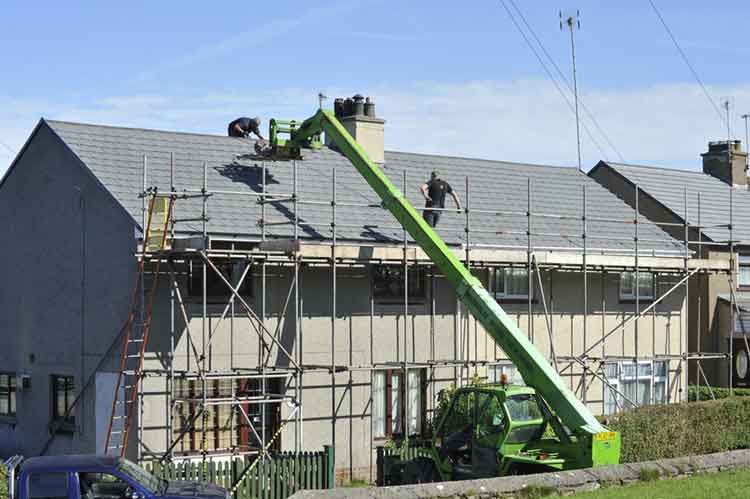
Proper planning is important for a successful roofing project. Installation of a roof requires the consideration of different factors. These factors are the result of various materials that are used during the roof installation project. Understanding the materials used in a roof installation project is important to ensure that the project completes successfully.
Here you will learn about important materials that a Huntsville roofing company uses during the installation of a new roof.
1. Roofing Material
Selection of the outside layer of the roofing material requires special consideration. The top material of the roof is a visible portion of the roof installation project. Your choice of roofing material will depend on your budget and aesthetic preferences.
The typical average cost of different roofing materials are as follows:
- Asphalt Shingles: $7,000 to $20,000
- Aluminum Shingles: $14,000 to $25,000
- Wood Shingles: $14,000 t $25,000
- PVC Tiles: $10,000 to $15,000
- EPDM Rubber: $8,000 to $15,000
- Steel Roofing: $23,000 to $30,000
- Slate Tiles: $25,000 to $50,000
- Concrete Tiles: $20,000 to $40,000
- Clay tiles: $25,000 to $50,000
The exact cost of roof installation will depend on the size of the house and the labor cost charged by the Huntsville roofing company.
2. Flashing
Flashing is a metal piece that is installed under the roofing tiles and siding at the point where the vertical part of the house joins the slope or horizontal part of the roof. The flashing is generally installed in areas where water can leak inside the roof. These include areas around the skylights, chimney, and stack vents.
Water will penetrate and rot the wooden structure of the ceiling if the flashing is not installed. Installing the flashing will allow the water to move off the roof. There are two common methods of installing the flashing: open valleys and closed valleys.
Closed Valley Roof
- Flashing blends with the roof
- Difficult to install in case of sharp angles
- Water may back up under roof tiles
Open Valley Roof
- Exposed metal is visible
- Simplified installation
- Less risk of water backing up under tiles
3. Ice Protection Layer
An ice protection layer that is a synthetic waterproof barrier is sometimes installed during the roof installation. This increases the cost of the roof installation project but provides more safety against ice formation.
Ice dam barrier will prevent the ice from backing up and penetrating through the sheath. This will prevent damage to the roof of the house. Installing an ice protection layer is recommended in areas with cold, frigid weather.
4. Ridge Vent
A ridge vent is a continuous vent that is installed along the top of the roof. The vent will help in air circulation in the attic area, which will prevent the formation of ice dams during winter. It can exhaust hot air from the inside to the outside.
Ridge vents are generally not included in old houses. Installing the vents is recommended when installing a new roof. However, ridge vents are not practical for some roofs. An alternative is the gable vents that can also allow air circulation in the attic area.
5. Pipe Boots
Roof pipes can be covered with a synthetic rubber boot to prevent leakage problems. Also known as pipe boots, they protect the roof pipes and prevent cracks due to extreme water conditions.
6. Ridge Capping
Ridge capping refers to the trim that is installed at the meeting point for two slopes on the roofs. These are pre-bent so that they fit the ridges of the roof. This capping must be replaced during a roof installation project.
Remember that some shady roofers will use 3-tab asphalt shingles instead of the ridge capping to reduce the costs. These are not suitable and could lead to roof leaks. You should always hire a reliable Huntsville roofing expert in your area to ensure the best work with no shortcuts.

